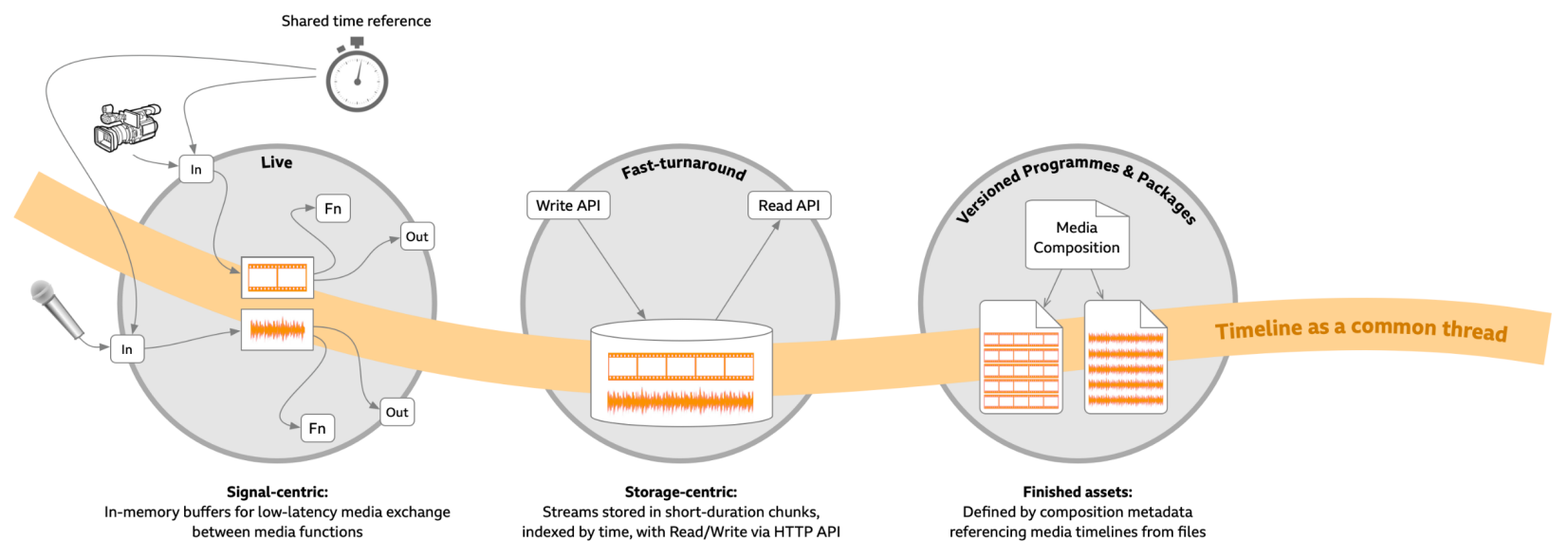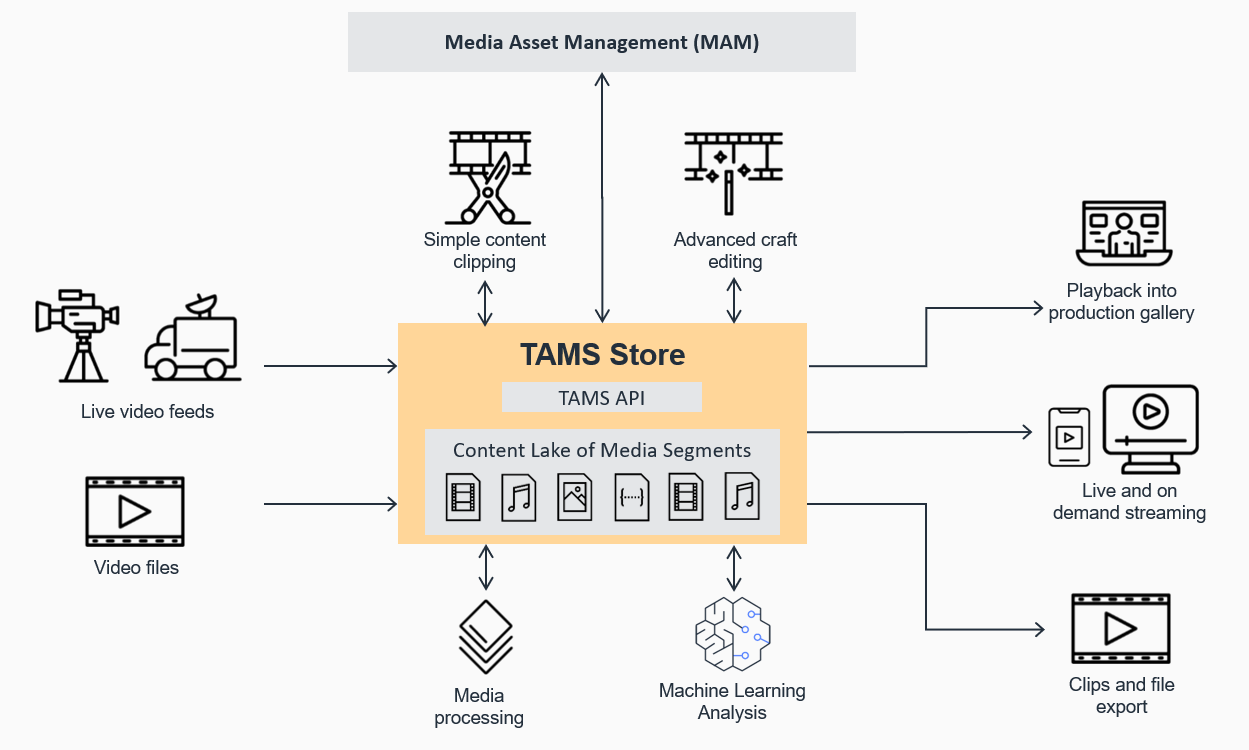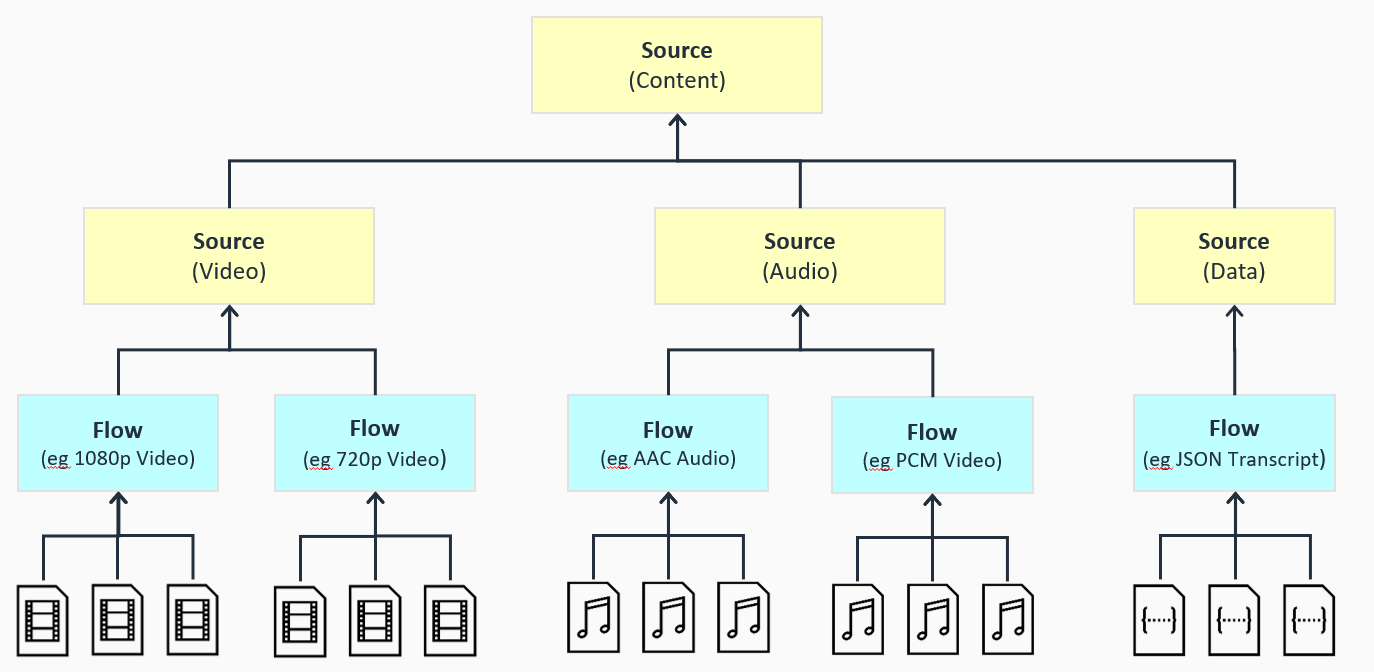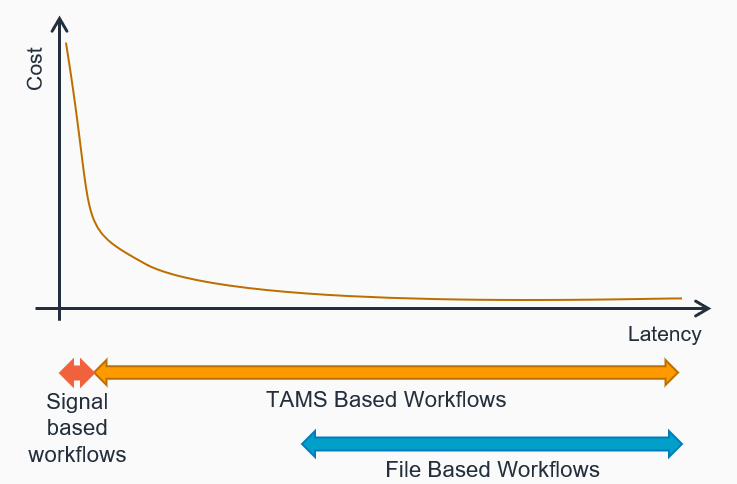What is a Time Addressable Media Store?
Time Addressable Media is a set of principles from BBC Research & Development (BBC R&D) which set out a practical approach for how to handle broadcast content throughout the media lifecycle from live to packaged content. It closely aligns with the Movielabs 2030 vision but is more applicable to the broadcast space.
At the core of the Time Addressable Media concept is that identity and timelines are common across the major domains from live, through fast-turnaround production and into packaged content. By preserving this data, it makes it easier to locate and work with content across the domains.

Figure 1: Concept of timing and identify spanning live, fast-turnaround and packaged content
The Time Addressable Media Store (TAMS) is a practical implementation of the Time Addressable Media principles. It based on the open source TAMS specification released by BBC R&D. Its focus is on the fast turnaround area of production, however the use cases go well beyond just this. The store allows multiple teams and activities to interact with the same content from a common store, often while an event is still ongoing, enabling live and near-live workflows.

Figure 2: A single TAMS being used for multiple purposes
This is achieved by converging technologies from the streaming space with broadcast technology. At the heart of TAMS is a store containing small chunks of media content with an API that describes what is available and how the content should be assembled. It allows multiple different technical qualities of the same content to co-exist within the store providing flexibility for different frame rates, resolutions, codecs to be handled seamlessly. The API is agnostic to the format of the content being stored, providing the tools to describe what has been uploaded.

Figure 3: Overview of the TAMS data structure
Since the store is based on object storage and a REST API, the distance between components in the workflow stops being a major issue as it is with traditional file system workflows. This enables greater distance between the store and users while maintaining security at the core.
Once a segment has been uploaded and registered with the store, it is immediately available to all other users with permission. The store also provides event notifications through webhooks, so receiving systems are informed of new content which allows the effect of growing content without the need to continuously poll the store.

Figure 4: How TAMS fits in with signal and file based workflows in terms of latency and cost
TAMS does not replace the need for signal centric workflows (SMPTE 2110, NDI, SDI) for the absolute real-time workflows. These workflows provide millisecond access to the content; however, they require costly infrastructure. Due to the use of chunked media, TAMS introduces an element of latency into the workflow, but the move away from live signals significantly reduces the costs required. For some applications, both worlds are required, although there may be workflows where a small amount of latency is acceptable and therefore the cost savings of not requiring a signal centric approach can be gained.
The actual latency will depend on the workflow implemented, and it is typically a combination of the encoder, segment duration, and any buffers on the player. The segment duration can be tuned as required. Typically, this ranges from 1 second for latency sensitive workloads to 30 seconds for workloads where cost optimization is more important than latency.